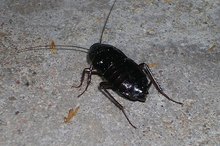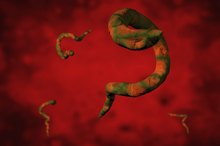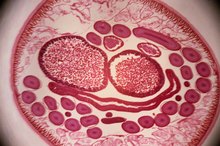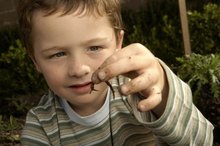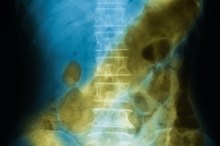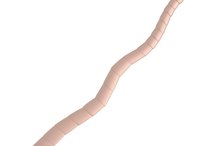Common Human Parasites
Human parasites live in or on our bodies and take their nourishment from us. By definition, parasites cannot live on their own--they use us as their hosts. A variety of insects, worms and single-celled organisms cause parasitic infections, which number in the millions annually in the U.S.
Lice
Lice are tiny insects that live on our hair and feed on our blood. Different species of lice live on the head, body and pubic region. Pubic lice are commonly called crabs. Pediculosis is the term for lice infestation of the scalp or body, and phthiriasis describes a pubic infestation. Lice cause intense itching and are highly contagious. They spread by close personal contact; they do not hop or fly. Lice eggs are called nits and appear as tiny white specs adhering to the hair.
- Lice are tiny insects that live on our hair and feed on our blood.
- Different species of lice live on the head, body and pubic region.
Mites
What Are Water Bugs?
Learn More
Itch mites are tiny parasites that burrow into the upper layers of the skin to feed, causing intense itching and a rash. Scabies is the medical term for an itch mite infestation. Scabies is highly contagious; the mites are spread by close personal contact.
- Itch mites are tiny parasites that burrow into the upper layers of the skin to feed, causing intense itching and a rash.
- Scabies is the medical term for an itch mite infestation.
Pinworms
Pinworms are the most common type of parasitic worm infection in the United States. These are small, white roundworms, roughly half an inch long; they are sometimes called threadworms. Pinworms live in the rectum and colon. At night, when the host is asleep, female pinworms crawl out and deposit eggs on the skin around the anus. This typically causes intense itching. Pinworms are spread by ingesting the eggs, and commonly affect young children because this age group can lack good hygiene skills.
- Pinworms are the most common type of parasitic worm infection in the United States.
- Pinworms are spread by ingesting the eggs, and commonly affect young children because this age group can lack good hygiene skills.
Giardia
Signs of Intestinal Worms in Humans
Learn More
Giardia intestinalis is a single-celled parasite that lives in the human intestine. It also lives in the intestines of other animals, including dogs, cats, cattle and deer. Giardiasis is the second-most common parasitic infection in the United States. Symptoms of Giardia infection include diarrhea, flatulence or passing gas, greasy bowel movements, abdominal cramps and stomach upset. Giardia is spread by ingesting the organism. Water, food or surfaces contaminated with Giardia-infected feces are common sources of infection.
- Giardia intestinalis is a single-celled parasite that lives in the human intestine.
Cryptosporidium
Cryptosporidium is a single-celled, waterborne parasite that lives in the small intestine of humans, cattle and other animals. Cryptosporidium--commonly called crypto--typically causes watery diarrhea within one week of infection. Other symptoms include:
- nausea
- vomiting
- stomach pain
- fever
- dehydration
- weight loss
People with a compromised immune system due to HIV, medications, organ transplants or cancer are at high risk of becoming seriously ill with crypto. Crypto is one of the most common causes of waterborne disease in the United States. It is a particularly hardy organism, which may survive despite chlorine treatment used by public water treatment systems.
- Cryptosporidium is a single-celled, waterborne parasite that lives in the small intestine of humans, cattle and other animals.
- It is a particularly hardy organism, which may survive despite chlorine treatment used by public water treatment systems.
Trichomonas
Trichomonas is a sexually transmitted parasitic infection. The Centers for Disease Control and Prevention states that more than 7 million new cases occur each year in the United States 134. Trichomonas--commonly known as trich--is a single-celled parasite called a protozoan. In men, trich lives in the urethra, the passageway for urine and semen. The infection typically causes mild or no symptoms in men. Most women, however, are symptomatic with vaginal itching, foul-smelling vaginal discharge and urinary urgency. Trich lives in the vagina and may migrate to the cervix and uterus if the infection is not treated promptly.
- Trichomonas is a sexually transmitted parasitic infection.
- Trich lives in the vagina and may migrate to the cervix and uterus if the infection is not treated promptly.
Related Articles
References
Resources
Writer Bio
Dr. Tina M. St. John owns and operates a health communications and consulting firm. She is also an accomplished medical writer and editor, and was formerly a senior medical officer with the U.S. Centers for Disease Control and Prevention. St. John holds an M.D. from Emory University School of Medicine.
